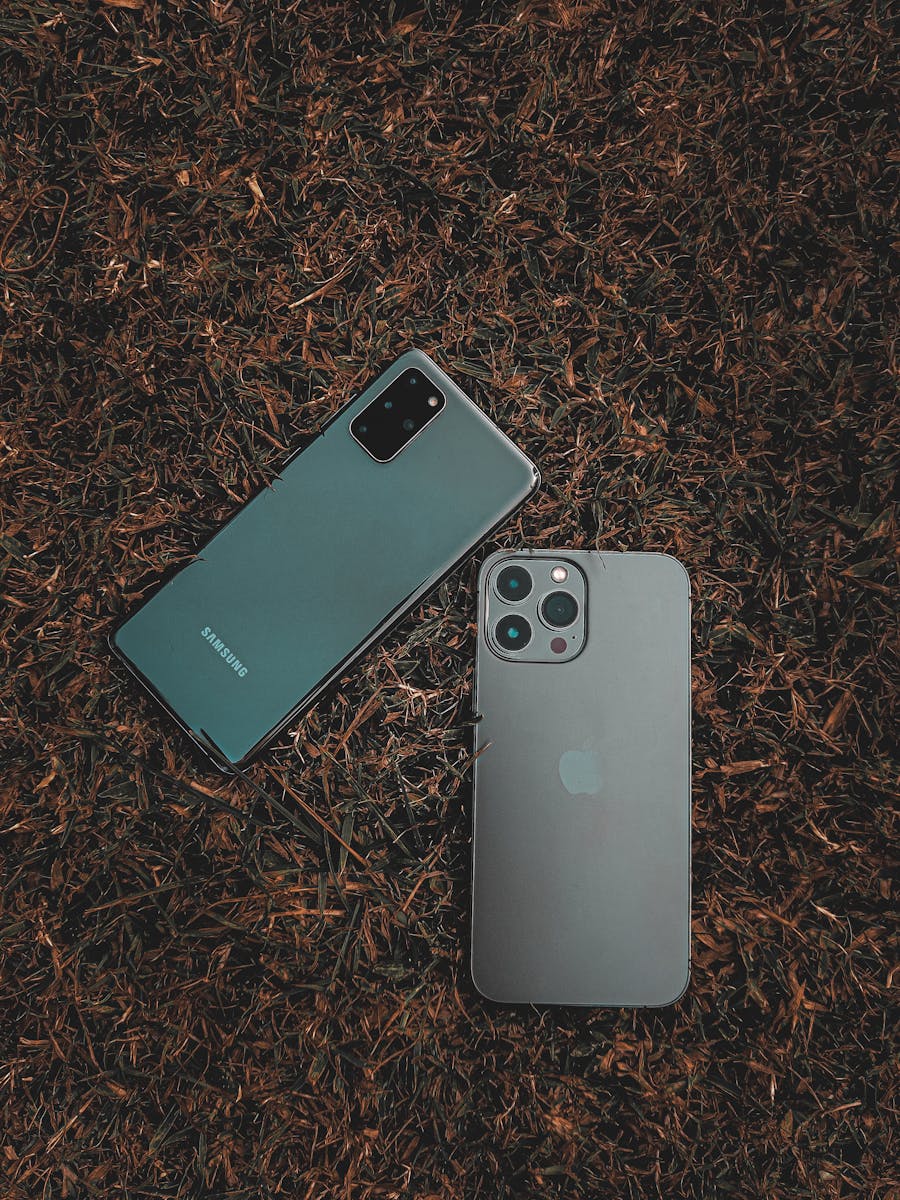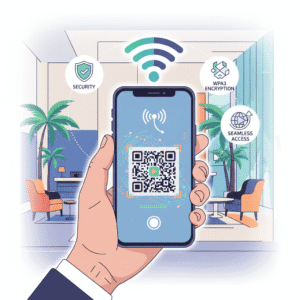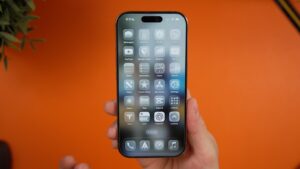Table of Contents
- Key Points
- Introduction
- Qr Code App Comparison Android Vs Ios
- Qr Scanner Performance Android Vs iOS
- Best QR Code Scanner Apps
- Frequently Asked Questions
- Conclusion
Key Points
- Android and iOS QR code apps differ in permission models, which impacts scanning speed and privacy.
- Hardware integration, such as camera APIs, gives Android a broader range of scanning angles but iOS often delivers more consistent focus.
- Battery consumption varies widely; native iOS scanners tend to be more efficient than many Android counterparts.
- The best QR code scanner apps on each platform balance speed, security, and extra features like QR generation.
- Cross‑platform solutions like QR Code Genie and QR Master Plus offer comparable experiences on both Android and iOS.
Introduction
QR codes have moved from niche marketing gimmicks to everyday utilities. From restaurant menus to contact‑less payments, the ability to scan a code quickly and securely is now a baseline expectation for mobile users. As the ecosystem matures, developers have produced a plethora of QR code apps for both Android and iOS, each promising faster scans, richer data extraction, and added functionalities such as QR generation, history tracking, and secure URL verification.
This article conducts a deep QR code app comparison Android iOS, examining not only feature parity but also underlying performance characteristics that affect real‑world usage. We will explore the nuances of QR scanner performance Android vs iOS, highlight the best QR code scanner apps for each platform, and provide actionable guidance for businesses and power users who need to choose the right tool for their workflow.
Throughout the discussion, we will reference two flagship cross‑platform solutions—QR Code Genie for Android and QR Master Plus for iOS—to illustrate how a well‑designed app can bridge the gap between operating systems while still leveraging platform‑specific strengths.
Qr Code App Comparison: Android Vs Ios
When evaluating QR code applications, the first layer of analysis focuses on the overall ecosystem each platform provides. Android’s open‑source nature encourages a wide variety of implementations, while iOS’s tighter hardware‑software integration often yields a more polished experience out of the box. Below we break down three critical dimensions: market overview, core feature sets, and user interface design.
Overview Of Market

The Android marketplace hosts thousands of QR scanning utilities, ranging from lightweight single‑purpose tools to heavyweight suites that include barcode generation, inventory management, and even augmented‑reality overlays. This diversity stems from Google’s permissive permission model, which allows developers to request camera access on demand and to embed additional capabilities such as NFC reading without additional OS‑level hurdles.
iOS, by contrast, has a more curated App Store environment. Apple’s review process enforces strict privacy standards and limits background camera usage, which narrows the field to apps that can demonstrate clear value and compliance. As a result, the top iOS QR scanners tend to focus on reliability, security, and seamless integration with native features like Safari’s “Open in” functionality.
From a business perspective, the Android market offers more experimentation—apps can quickly adopt emerging QR standards (e.g., Micro QR, iQR) and push updates without waiting for OS‑level approvals. iOS developers, however, benefit from a predictable hardware baseline: every iPhone model ships with a calibrated camera system that reduces the need for device‑specific tuning.
Core Feature Set
Both platforms support the essential capabilities of scanning, decoding, and generating QR codes. Yet the depth of each feature can differ dramatically. On Android, developers can expose advanced options such as batch scanning, custom decode callbacks, and direct integration with Google Lens for contextual information. Some apps even allow users to define “trusted domains,” automatically blocking suspicious URLs before they open.
iOS apps typically leverage the native Vision framework, which provides high‑precision detection and built‑in support for error correction levels. This results in smoother handling of low‑contrast or partially damaged codes. iOS also offers a built‑in “Share Sheet” that lets scanned data be sent to any compatible app with a single tap, a convenience that many Android apps replicate through custom intents but rarely match in fluidity.
When it comes to QR generation, Android apps often include bulk creation tools, allowing businesses to export CSV‑based QR batches for inventory tagging. iOS equivalents tend to focus on design‑oriented generation, providing high‑resolution vector exports suitable for print media. Both ecosystems now support dynamic QR codes—links that can be updated after printing—though Android’s background services make real‑time analytics easier to embed.
User Interface And Experience

Usability is a decisive factor for adoption. Android’s UI guidelines encourage flexibility, so many QR scanners adopt a “one‑button” approach: launch, point, and wait. However, the lack of a universal design language can lead to inconsistent experiences, especially on devices with differing screen sizes or aspect ratios. Developers often need to implement multiple layout configurations, which can increase the risk of UI bugs.
iOS, guided by Human Interface Guidelines, pushes for a clean, minimalistic scanner view. The camera preview usually occupies the full screen with subtle overlays indicating the scanning window. Haptic feedback on successful scans provides instant confirmation, a feature that Android only recently standardized through the VibrationEffect API.
Both platforms now support dark mode, which is essential for low‑light scanning. Notably, the cross‑platform apps QR Code Genie and QR Master Plus have implemented adaptive UI that respects system themes, ensuring a consistent experience regardless of the device.
Qr Scanner Performance Android Vs iOS
Performance is more than just speed; it encompasses accuracy, resource consumption, and reliability under varied lighting conditions. In this section we dissect the technical factors that shape the QR scanner performance Android vs iOS narrative.
Speed And Accuracy
Speed is measured by the time from camera activation to successful decode. Android’s Camera2 API, combined with third‑party libraries like ZXing or ML Kit, can achieve sub‑second detection on modern devices. However, performance can vary widely between manufacturers due to differences in sensor quality and driver optimization.
iOS benefits from Apple’s tightly coupled hardware and software stack. The Vision framework uses on‑device machine learning models that are optimized for the A‑series chips, delivering consistently fast detection—often under 300 ms—even on older iPhone models. Accuracy is similarly high because Apple’s image signal processor (ISP) applies real‑time noise reduction and auto‑focus adjustments that reduce false positives.
Real‑world tests have shown that while high‑end Android flagships can match iOS speed, mid‑range Android devices sometimes lag, especially when scanning codes with low contrast or unconventional data patterns. Developers can mitigate this by enabling continuous autofocus and adjusting exposure manually, but such tweaks increase code complexity.

Hardware Integration
Android’s open ecosystem allows apps to tap into device‑specific features such as dual‑camera setups, depth sensors, and even infrared cameras on some models. An advanced Android scanner can switch between wide‑angle and telephoto lenses to capture larger QR codes from a distance, a capability not currently exposed on iOS.
Conversely, iOS provides a uniform set of camera capabilities across all supported devices. The built‑in auto‑focus, optical image stabilization, and HDR processing work seamlessly with the Vision framework, ensuring that even a basic iPhone can scan a QR code in challenging conditions like backlit signage or glossy surfaces.
Both platforms support barcode scanning in low‑light environments through torch control. Android apps often expose a manual “flash” toggle, while iOS automatically activates the torch when ambient light falls below a threshold, offering a smoother user experience.
Battery Consumption
Battery life is a subtle but important metric, especially for enterprise users who may keep the scanner active for extended periods. Android’s camera APIs can be power‑hungry if not managed correctly; continuous preview at high frame rates can drain a 4000 mAh battery in under an hour.
iOS’s native Vision implementation is highly optimized for low power draw. The framework processes frames at a reduced rate (typically 15 fps) while still maintaining high detection reliability. This translates to significantly lower battery impact—many iOS QR scanners report less than 5 % battery usage after an hour of intermittent scanning.
Cross‑platform apps like QR Code Genie and QR Master Plus adopt platform‑specific optimizations: on Android they leverage the CameraX library’s lifecycle awareness to pause the preview when the app is backgrounded, and on iOS they rely on Vision’s built‑in frame throttling. These strategies keep battery consumption within acceptable limits on both operating systems.
Best QR Code Scanner Apps
Choosing the best QR code scanner apps depends on the user’s priorities: raw speed, security features, multi‑platform support, or additional utilities like QR generation. Below we list top recommendations for Android, iOS, and cross‑platform solutions, highlighting why each stands out in a QR code app comparison Android iOS.
Android Recommendations
QR Code Genie – Available on Google Play, this app combines fast scanning with robust security checks. It uses ML Kit for on‑device decoding, supports batch generation, and includes a “trusted domains” whitelist to prevent phishing. The app’s integration with Google Drive enables automatic backup of scan history, making it ideal for business users who need audit trails.
Barcode Scanner Pro – A lightweight solution that focuses on speed. Leveraging the CameraX API, it achieves sub‑500 ms scan times on most devices. While it lacks advanced security features, its minimal UI makes it perfect for field workers who need a quick, distraction‑free scanner.
QR Toolbox – Offers a full suite of utilities: QR generation, NFC tag reading, and QR‑based contact sharing. Its open‑source core (based on ZXing) allows developers to customize the scanning engine, which is valuable for enterprises with proprietary data formats.
iOS Recommendations

QR Master Plus – The iOS counterpart to QR Code Genie, it utilizes Apple’s Vision framework for high‑accuracy decoding. Features include secure URL verification, automatic QR generation from contacts, and integration with Apple Wallet for ticketing use cases. The app respects iOS privacy standards, requesting camera access only at the moment of scanning.
Scanbot SDK – Though primarily a developer SDK, the consumer‑facing Scanbot app offers an exceptionally smooth scanning experience. It benefits from the A‑series chip’s neural engine, delivering rapid detection even on older iPhones. The app also provides PDF creation from scanned documents, extending its utility beyond QR codes.
Quick Scan – A minimalist scanner that focuses on speed and low battery impact. It runs in the background and can automatically decode QR codes from the notification center, a handy feature for users who receive QR‑based links via messaging apps.
Cross‑Platform Options
For organizations that need a consistent experience across Android and iOS, cross‑platform apps are the most efficient choice. QR Code Genie and QR Master Plus share a common codebase built with Flutter, ensuring feature parity and uniform UI on both platforms. They support dynamic QR codes, cloud‑based analytics, and enterprise‑grade encryption for scanned data.
Another notable cross‑platform solution is Scanly, built with React Native. It offers real‑time scanning, QR generation, and a built‑in “scan history” that syncs via Firebase. While not as deeply integrated with native camera APIs as the Flutter apps, Scanly still delivers respectable performance and a generous free tier for small businesses.
Frequently Asked Questions
What are the main differences between Android and iOS QR scanners?
Android scanners benefit from a more flexible permission model and a wider variety of hardware options, which can lead to innovative features such as dual‑camera scanning and custom NFC integration. However, this flexibility can also result in inconsistent performance across devices. iOS scanners, on the other hand, enjoy a tightly integrated camera stack and the Vision framework, delivering consistently fast and accurate scans with lower battery usage. Security‑focused features like URL whitelisting are more common on Android due to fewer OS restrictions, while iOS emphasizes privacy by limiting background camera access.
In practice, the choice often comes down to the user’s priority: if you need cutting‑edge hardware utilization and customizable workflows, Android may be preferable. If you value a polished, energy‑efficient experience with strong privacy guarantees, iOS is the better option.
How does battery usage compare when scanning QR codes on Android vs iOS?
Battery consumption is heavily influenced by how the app accesses the camera. Android’s Camera2 API, if used without throttling, can keep the camera sensor active at high frame rates, draining the battery quickly—especially on devices with larger screens and less efficient processors. iOS’s Vision framework processes frames at a lower, adaptive rate, which conserves power while still maintaining high detection reliability.
Well‑designed apps mitigate these differences. For example, QR Code Genie pauses the preview when the app is not in the foreground, and QR Master Plus leverages Vision’s built‑in frame throttling. Users can also manually disable the torch and reduce preview resolution to further extend battery life on both platforms.
Can I use the same QR code app on both Android and iOS?
Yes. Cross‑platform applications such as QR Code Genie (Android) and QR Master Plus (iOS) are built from a shared codebase, delivering identical features, UI themes, and data synchronization across both operating systems. These apps typically store scan history in the cloud, allowing users to switch devices without losing information.
Other cross‑platform options like Scanly and Scanbot also provide comparable experiences, though they may differ slightly in UI polish due to platform‑specific design guidelines. Choosing a cross‑platform solution simplifies training, reduces support overhead, and ensures that analytics collected from scans remain consistent regardless of the device used.
Are there security risks associated with QR code scanning?
Yes. QR codes can embed malicious URLs, phishing attempts, or trigger unwanted actions on a device. Android apps that request broad permissions (e.g., internet access, file storage) can inadvertently expose users to risk if a malicious QR code triggers a download. iOS’s stricter sandboxing reduces this surface, but users can still be directed to harmful websites.
Reputable scanners mitigate these risks by performing URL safety checks before opening a link. Both QR Code Genie and QR Master Plus include built‑in verification against known phishing databases and allow users to disable automatic opening of URLs. Enterprises should enforce policies that require scanning apps to have “trusted domain” whitelists and to log all scanned URLs for audit purposes.
How do I generate QR codes within a scanner app?
Most modern QR scanner apps include a generation module. The process typically involves selecting the data type (URL, contact, Wi‑Fi credentials, etc.), entering the required information, and choosing an error‑correction level. The app then renders a high‑resolution QR image that can be saved, shared, or printed.
On Android, QR Code Genie offers batch generation, allowing users to import a CSV file and create dozens of QR codes automatically—a useful feature for inventory management. On iOS, QR Master Plus provides vector‑export options (SVG, PDF) for print‑ready output. Both apps support dynamic QR codes, where the destination URL can be updated later without changing the printed code, enabling flexible marketing campaigns.

Does the camera quality affect QR code scanning?
Camera quality plays a significant role in scan reliability, especially under low‑light or high‑glare conditions. Higher resolution sensors can capture more detail, making it easier for decoding algorithms to recover data from damaged or partially obscured codes. However, software optimization often matters more than raw megapixels.
On Android, developers can fine‑tune focus, exposure, and ISO settings to compensate for lower‑end hardware. iOS devices benefit from Apple’s proprietary image signal processor, which automatically enhances contrast and reduces noise, delivering consistent results even on older iPhone models. Consequently, a well‑optimized app can achieve comparable performance on a mid‑range Android phone and a flagship iPhone.
What are dynamic QR codes and why should I use them?
Dynamic QR codes point to a short URL that redirects to the actual destination. This indirection allows the content behind the QR code to be changed after the code has been printed or distributed. Businesses use dynamic codes for marketing campaigns, event tickets, and product tracking because they can update the target URL without reprinting the code.
Both QR Code Genie and QR Master Plus support dynamic QR generation with built‑in analytics, showing how many times a code was scanned, the geographic location of scans, and the device type. This data provides valuable insights for marketers and helps assess the effectiveness of offline campaigns in real time.
Conclusion
In the rapidly evolving world of mobile scanning, the choice between Android and iOS QR code apps hinges on a blend of performance, security, and user experience considerations. Android’s open ecosystem fuels innovation and flexibility, allowing developers to harness diverse hardware and create feature‑rich scanners. iOS, with its tightly integrated camera stack, consistently delivers fast, accurate, and energy‑efficient scanning out of the box.
Our QR code app comparison Android iOS highlights that the best solution often depends on the specific needs of the user or organization. For enterprises that demand cross‑platform consistency, apps like QR Code Genie and QR Master Plus provide a unified feature set while respecting each platform’s strengths. For power users focused on raw speed or specialized hardware, Android‑only options such as Barcode Scanner Pro or QR Toolbox may be preferable.
Ultimately, the most effective QR scanning strategy combines a reliable app, vigilant security practices, and an understanding of how hardware and software interact. By aligning these elements, businesses and individuals can unlock the full potential of QR technology—whether for quick contact sharing, secure payments, or data‑driven marketing campaigns.






